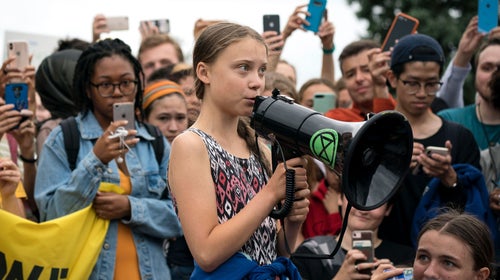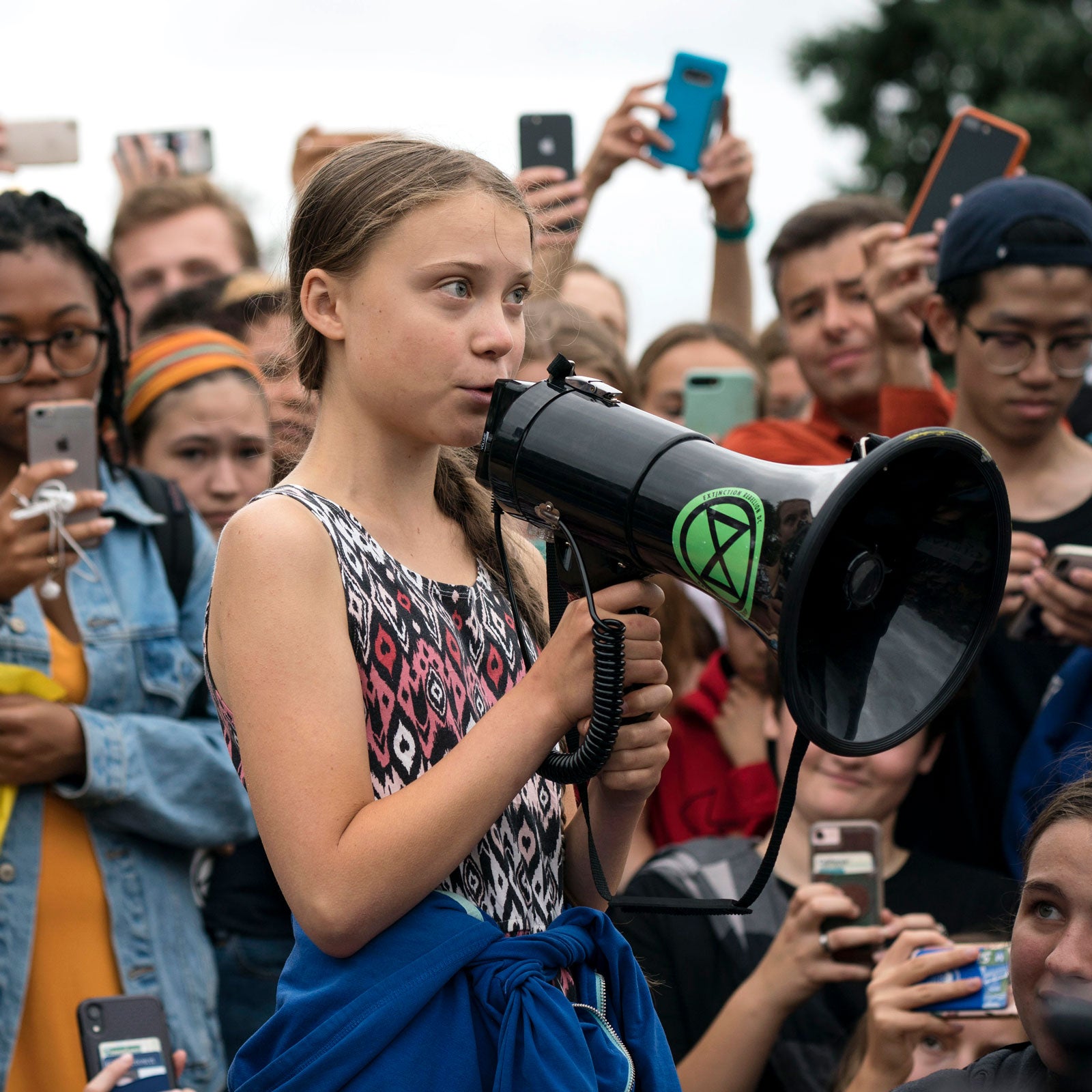Earlier this month, I watched the CNN climate town hall while my best friend’s four-year-old was flipping on the couch cushions next to me. Occasionally, he’d pick his head up from improv gymnastics and ask questions about what and who we were watching: “Do we like her? Is she good?”
Is she good? It’s tempting to slug wine and say, “Well yeah, kid, we like her, but it’s complicated,” like the jaded, hedgy adult that I am. In tackling the climate crisis and drastically cutting emissions, there are so many shades of gray: energy infrastructure is expensive, and the whiplash of election cycles makes action hard. But I’m not going to explain that to a toddler, and there’s truth in the black-and-white polarity. Every year this kid has been alive has been record-breakingly hot. Human-generated climate change is irrevocably damaging the world he’s growing up in. That is bad. Kids just slightly older than him are protesting and organizing to push governments into addressing it—and getting international traction.
Going into the , kids from around the world are grabbing their bullhorns. The UN is hosting a Youth Climate Summit on September 21, where they’ll pair youth activists with funders and other resources and facilitate intergenerational dialogue. On Friday the 20th, and again on the 27th, there will be a youth-led designed to noticeably disrupt business and underline the importance of addressing climate change while the world leaders are meeting. There are already 2,500 events planned, and New York City public schools will excuse students who cut classes on the 20th to demonstrate. Over the rest of the week, dubbed Climate Week in NYC, there are events ranging from climate finance sessions to art installations about environmental justice.
Of course, very visible throughout this will be the movement’s figurehead, 16-year-old Swedish activist Greta Thunberg, whose school walkouts have inspired a global movement, Fridays for the Future, of kids cutting school to demonstrate. Thunberg self-identifies as having Asperger’s syndrome, which she says makes her see things in black and white. To her there’s a cognitive dissidence in not addressing climate change when it’s so obviously damaging. That’s one thing her peers share: a conviction that this is a black-and-white issue. Through protest, , and collective action, they are accruing political power before they even have voting power. Or maybe they’re getting so creative simply because they can’t yet vote. In the U.S., the youth-led instigated that CNN candidate town hall after the Democratic National Committee decided not to have a climate debate. In the UK, youth activists motivated parliament to declare a climate emergency. They say they’re fighting for a livable future. And with its life-or-death clarity, their message is resonating in ways it hasn’t before, even in the face of denial, , and flat-out campaigns.
“They’re bold and unapologetic, and they’re not swayed by the same kind of politics that older people are,” says Thanu Yakupitiyage, head of U.S. communications for 350.org, which was started by a group of college students in 2008 and has been at the forefront of youth organizing. Climate change has a level of immediacy now, she points out. “It’s actually happening in our communities. Teenagers can see what’s happening around them, and it’s not so distant anymore. That’s why there’s the call to unite behind the science and hold the industries that have perpetuated the crisis accountable.”
“They’re bold and unapologetic, and they’re not swayed by the same kind of politics that older people are.”
The of the broader Climate Action Summit, according to a by UN secretary general António Guterres, is to reach net-zero emissions by 2050, and more immediately, to reduce carbon emissions by 45 percent in the next 12 years, in an effort to hold increases in global temperatures to 2 degrees Celsius above preindustrial levels. “Climate delay is almost as dangerous as climate denial,” Guterres wrote in an op-ed in , announcing the summit last March. That’s where the kids are hammering the adults.
In addition to a fossil-fuel-free economy, the , the American group working in solidarity with Thunberg, is demanding treaties protecting indigenous lands, an end to industrial agriculture subsidies, and a halt to deforestation. What’s more, they’re piggybacking on each other’s work—a lesson that many activist groups could use. They’re underscoring the inequity: that it’s going to impact everyone but that it will hit vulnerable populations, like the shantytowns of the Bahamas and tribal villages in coastal Alaska, the hardest. This bald injustice lies at the heart of the in ways it hasn’t been in the adult political narrative.
And finally, adults are listening. At , the internal advocacy group Amazon Employees for Climate Justice is organizing a walkout in solidarity with the youth strike, which it says is the first walkout in tech-industry history over climate change. Patagonia is closing all of its retail shops on the 20th so employees can march and the spaces can serve as organizing hubs for climate protest. “These youth activists are doing so much, and we don’t want to get in their way,” says communications manager Corey Simpson. “We’re trying to figure out where and how can we make their efforts more pronounced.”
Sure, a protest isn’t the same as policy, but so much of politics is narrative power. Simple messages resonate. They can gain enough momentum to put people in office.
We can’t depend on middle schoolers to develop the concrete details of climate plans, but as Guterres has pointed out, there’s an existing we can follow, one that moves from financing decarbonization through creating sustainable infrastructure and protecting vulnerable communities. None of it is cheap, but it’s not impossible, and as many eighth-graders have noted, it’s ethically crucial.
That’s something I’d feel comfortable telling a four-year-old. It’s not always easy to do good, but we can’t give up on the hard stuff just because it’s hard.


